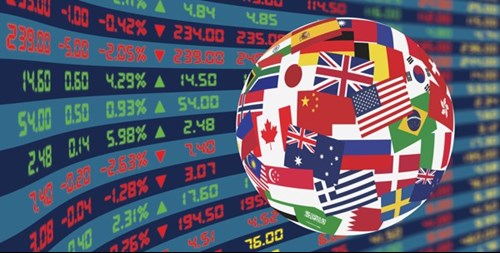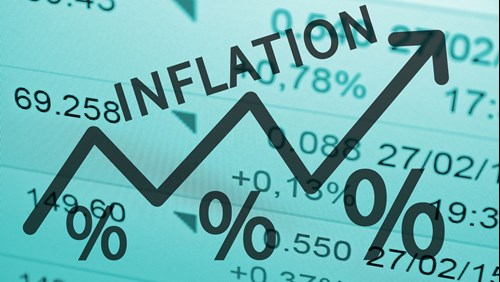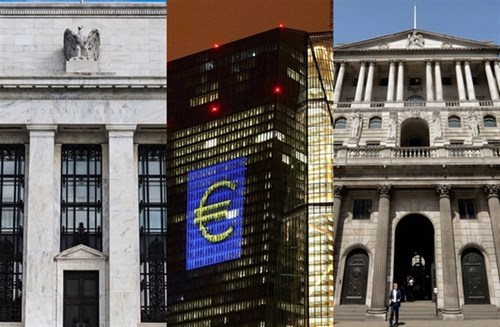
In his last commentary of 2021, Ravenscroft chief investment officer Kevin Boscher looks back at 2021 and ahead to 2022.
The world economy is in transition from the recovery boom phase brought about by extreme monetary and fiscal stimulus together with vaccinations toward its pre-pandemic and secular steady-state growth. Although inflation remains a concern and longer-term threat, it is expected to turn down and gradually ease over the course of 2022. Central Bank policy is also changing with the Fed leading the way as it removes some of its hyper-stimulative settings and starts to tighten policy. Having recovered very strongly from their Covid-induced lows, financial markets are also going through a transitional phase. Given the evolving macro background and uncertainty around slowing growth, sticky inflation and the emergence of Omicron, equities have likely entered a period of reflection with an increased risk of correction and elevated volatility for a while. However, the longer-term outlook remains favourable, and I expect a combination of Chinese policy easing, a less hawkish Fed and easing inflation concerns to support markets next year.

It is clear that the global economy is slowing and remains out of sync as the Covid-induced and extremely powerful stimulus fades and as activity reverts to its pre-pandemic and secular trends. This is especially true in China, where the economy has slowed substantially owing to the imposition of monetary and fiscal austerity over the past year or so as the authorities try to de-lever and de-risk the economy. Structural forces are also dampening growth and include weak investment demand, an ageing demographic, a lack of reform and an aggressive decarbonisation drive. The US economy is still expanding around a 5% annualised rate but will inevitably slow toward its secular trend of between 1.5-2%. US labour force growth has been in a steep decline for decades and the pandemic has accelerated this trend.
Elsewhere, neither Europe nor Japan has clawed back output lost during the pandemic and economic activity remains well below trend, which itself was already disappointing. As far as the UK is concerned, similarly to the US, the economy has positive momentum and although growth will turn out less than expected this year, it should stay well above trend for the next 12-18 months although much uncertainty remains around the post Brexit transition. The cyclical environment for emerging world economies is mixed but generally challenging due to less fiscal and monetary support for their economies compared with developed countries, a slower rate of vaccinations and subsequent economic re-openings, a slower China and economic dislocation. Generally, Asia has fared much better than Latin America with a faster recovery, less of an inflation surge and more currency stability.

The emergence of Omicron
It is too early to know what impact Omicron will have on the outlook for markets and economic activity next year, but the initial concerns and subsequent government reactions are a reminder of this acute economic vulnerability.
A lesson from Delta is that it’s very hard to stop the spread of virulent new variants but vaccinations will hopefully continue to be very effective in reducing serious illness or deaths. The problem is that vaccination rates remain low in many countries and not just emerging ones. Also, it’s the restrictions that are imposed in response to the virus that cause the majority of damage and governments respond to the threat in very different ways. On balance, it is likely that this new risk will put further downward pressure on growth and encourage central banks to step back from their tightening bias. However, it could also increase the risk of additional disruption to supply and demand at the same time and thus put upward pressure on inflation, further adding to market concerns and central bank challenges.

Does inflation look transitory or more long term?
The consensus view seems to be that the recent outbreak of inflation in the US and Europe is structural and thus sticky and will likely settle in a 3-4% range rather than the 2% targeted by central banks. The key argument put forward is that large monetary expansion, together with the huge fiscal injections during the pandemic crisis has sown the seeds of excess demand. The post-pandemic disruption to global supply for and demand of a range of goods, services and workers has also contributed significantly and is likely to last for some time. As I have written about previously, I side more with markets and central banks here and don’t share these inflationist views. The experience of Japan over several decades together with the US since the GFC in 2008 confirms that monetary expansion alone is neither necessary nor sufficient for rising inflation. If the money created is not used for economic activity or creating credit expansion and, instead, is added to global savings, then this tends to put downward pressure on both growth and inflation. This has, indeed, been the case for most developed economies for some considerable time with secular trends playing a major role. An ageing population and shrinking work forces means that there is a clear tendency to spend less and save more, which leads to lower investment. At the same time, rising debt levels encourage austerity and repayments, which is a key factor behind sclerotic credit growth. Technological disruption also adds to these trends since it substitutes labour for capital and boosts productivity.
It’s true that wages are rising in some sectors and especially the US. This is largely due to the post-pandemic disruption, but a shrinking work force is also a major factor. However, increasing wages do not translate directly to inflation. If productivity in the affected industries is also rising, then this will offset some of the higher employment costs and will help keep unit labour costs in check. This lessens the need for companies to raise prices for the consumer. Also, this will not necessarily lead to increased demand since income could still be declining in real terms due to higher inflation and consumers might wish to add to household savings rather than spend the extra income given the uncertain backdrop.
Most market indicators, such as the gold price, bond yields, a strong Dollar and inflation expectations support the view that inflation is unlikely to be a long-term problem. Both structural and cyclical forces point to inflation falling next year and it could surprise markets with how quickly it subsides. However, it will likely prove sticky for a while longer, especially if Omicron results in further restrictions and shutdowns.
The truth is that nobody knows where inflation will end up and there are no models that can predict this given the unprecedented and unique economic background.

Central banks under pressure to tackle inflation
How central banks and governments react to slowing growth and sticky inflation will also be a key factor for markets. The Fed has started tapering its QE, the Bank of England has raised interest rates and other central banks, including the Fed, may also raise rates. Central banks are in a difficult position and under mounting pressure to “do something” about rising inflation, especially in developed economies. Fed Chair Powell looks to have capitulated to the hawkish thesis and the Fed is accelerating its balance sheet tapering over the next few months, paving the way for rate rises in the second half of next year. However, central banks are also acutely aware that they need higher inflation and nominal growth in order to break away from the deflationary threat, deal with growing debts and finance higher government spending. Hence, financial repression and keeping bond yields low remain key objectives and the central banks will find it very difficult to raise rates in response to the inflation threat or control the outcome. In such an environment, the risk of policy error is high and volatility around these issues is likely to increase. I expect the Fed and other central banks to stay on the dovish side and keep policy very supportive, particularly if growth weakens more than expected or inflation pressures start to ease. I also expect the People’s Bank of China to end its austerity and ease policy next year.

What’s the outlook for investments?
I remain positive on the investment outlook for the next 12 months or so, although the threats to growth and markets are rising and volatility across most asset classes is likely to increase.
Global bonds should continue to be supported by a number of factors; the combination of slowing global growth; an abundance of global savings and the search for yield; monetary policy which will remain very accommodative despite some modest tightening; easing inflation concerns. In addition, bonds have already priced in a lot of bad news regarding inflation and a more hawkish Fed and could perform better than expected should it become clear that the Fed has to back away from rate hikes as both growth and inflation slow. Historically, Fed tightening cycles have almost always ended with some form of economic or financial calamity, such as a recession or stock market crash. In recent weeks, financial markets have already reacted negatively to the Fed’s more hawkish turn and the risk of policy error will intensify over the next few months. This is likely to result in lower US Treasury and other sovereign bond yields and a flattening of the yield curve as long duration sovereign bonds outperform. However, it will be less positive for credit markets in the near-term given the prospect of lower growth and uncomfortably high inflation for a few more months which will put further pressure on the Fed and other central banks. Longer-term, credit markets should benefit from lower sovereign yields, a more dovish Fed and reasonable economic growth. US Inflation linked securities (TIPS) should also perform well in this environment. In my view, the long-term bull market in bonds is not yet over, but it is probably in the final stages and care is required given negative real yields and the challenging and changing global macro backdrop.

Equities face several challenges over the next few months, including weakening economic activity, sticky inflation, concerns over Fed policy and Omicron. Although the headline US indices are holding up fairly well at present, beneath the surface many individual stocks have been struggling and have already fallen significantly. Other global markets have largely been range bound and treading water for some time. It is possible that the early part of next year is characterised by rising equity price volatility and periodic shakeouts. Longer-term, stocks will continue to be supported by a number of factors; provided that the Fed step back from tightening policy too much, then the US economy should avoid recession and global growth will maintain its above-trend path for the next 12 months at least. Corporate earnings have been very strong and will likely continue to grow next year, albeit at a slower pace; the current monetary environment remains hyper stimulative and central banks have little choice but to keep financing costs low and maintain their financial repression policies, thus forcing capital into higher risk assets in a search for yield; US Dollar liquidity is tightening short-term due to Fed tapering and the fiscal impulse fading but global savings are huge and higher than pre-pandemic, hence global liquidity will continue to flow into risk assets; supply disruptions have started to ease and inflation is likely peaking and is expected to revert to its low secular trends over the next year or so; valuations are stretched in some areas and generally above long-term averages in many markets, but they are some way below their historic highs and still look attractive in a world of near zero interest rates and low bond yields. In some cases, they still look very cheap in absolute and relative terms, most notably the UK.
Our long-term themes remain attractive given an accelerating pace of digitalisation and technology spend, increasing spend on healthcare as the population ages and lives longer, a greater determination to address climate change and environmental challenges and growing consumer power. Although cyclical and value stocks may struggle for a while given the changing economic environment, they should enjoy support from an eventual China easing, a more dovish Fed and falling inflation as next year progresses. However, growth stocks should also perform well assuming that bond yields remain low and given the superior cash flow and returns on capital that many of these companies enjoy. The cyclical profile of emerging markets remains bearish going into 2022, largely due to slower Chinese and global growth, a slow vaccination rate, stagflation risks, a strong Dollar and recent rate hikes. However, the outlook for EM should improve as the year progresses but investors will need to stay selective and likely favour Asia over Latin America.

Currency notes
The case for a strong Dollar remains intact. The US economy is outperforming the rest of the world, the Fed is tightening monetary policy and the Biden administration is trying to push for another big social spending programme. Generally, the combination of a tighter monetary policy and an easier fiscal policy tends to be bullish for a currency. At some point next year, when the Fed pauses or reverses its hawkish policy or China embarks on a significant policy easing, then the Dollar will likely reverse. Sterling remains cheap on a long-term basis but with the economy struggling and the post-Brexit outlook still unclear, it will probably stay that way for a while longer. After a surge in 2020, commodity prices have recently weakened and will stay soft on a weak Chinese economy, strong Dollar and concerns over new Covid variants. An inflection point for commodities may be close if Chinese activity starts to accelerate and the Dollar starts to soften, although an unwinding of the supply and demand disruption may temper some of this. The outlook for the energy sector is somewhat different and prices are likely to stay elevated for some considerable time. The combination of proliferating ESG divestment practices, government policies and the green movement have limited exploration and production and raised capital costs for the sector. This has led to constrained supply at a time when demand is strong. This trend is likely to continue beyond the near-term and the world will likely have to get used to higher energy costs unless the current policies change. This will exacerbate the inflation threat initially but eventually will be more problematic for growth as it acts as a form of a global consumption tax.

A year of transitions
The world economy, policy and financial markets will go through major transitions next year. I expect this to fuel increased volatility in financial asset prices and precipitate big leadership changes in global equity markets and perhaps currencies. A barbell investment strategy remains sensible with an appropriate balance between value, growth, cyclical and defensive equities with hedges in place against the prospect of both higher inflation and weaker growth. A more active investment strategy, rising volatility, a greater dispersion of returns both within and across asset classes and stock selection could all play a key part in performance next year. A significant China easing, the Fed turning more dovish, inflation concerns subsiding or Omicron proving less dangerous than feared would almost certainly be bullish for markets. It makes sense to be cautious and stay a bit more defensively positioned for now. However, the longer-term investment outlook remains favourable and we will be looking for opportunities to add to our themes and other preferred holdings over the next few months.

